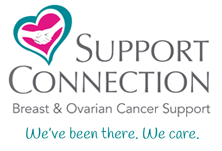Your baby’s eyes have stages of development. Pediatricians should educate parents about children’s vision and recommend parents bring their child for a dilated eye exam with a pediatric ophthalmologist when their baby is around 2 to 4 months old. Parents should continue taking their child to a pediatric ophthalmologist once a year after the first visit.
The American Academy of Pediatrics recommends newborns get examined for ocular structural abnormalities. Vision assessment beginning at birth has been endorsed by the American Academy of Pediatrics. Do not take your child’s eyesight for granted. My 4-year-old daughter Natalie lost her right eye to retinoblastoma, cancer of the eye, at 8 months old. Most cases occur in the first five years of life. After Natalie’s diagnosis of retinoblastoma, her eye was removed to save her life. The tumor was just too large to treat or to rescue any vision.
Early diagnosis and treatment is essential as retinoblastoma quickly spreads beyond the eye to the brain or bone marrow. Left untreated, this cancer is always fatal. However, considerable advances in the treatment of retinoblastoma have been made over the past two decades, leading to one of the highest cure rates among childhood cancer patients. Early detection is vital, not only for cancer but also for pediatric cataracts and glaucoma, which can also cause blindness. Because many children do not suffer from symptoms, retinoblastoma can be a secret killer. Some children can even die from this type of cancer if it escapes the eye. It’s important to recognize the symptoms, should your child experience the warning signs. Common symptoms include:
- a white cat’s eye in some photographs or in dark rooms. Known as leukocoria, or “white pupil,” this is the most common sign.
- a lazy eye, meaning a crossed eye, or eyes looking toward the nose or ear.
- red, irritated eyes.
- sensitivity to light.
- watery eyes.
- poor vision.
Treatments have improved and feature lasers, cryotherapy, chemotherapy, radiation and enculeation. The type of treatment received will depend on factors such as the size, location and number of tumors within the eye, and the potential for vision. If both eyes are affected, each eye will be treated on its own merit.
Natalie is a fun little girl who wears a prosthetic eye and safety glasses to protect her one surviving eye. She travels from New Jersey to Wills Eye Hospital in Philadelphia for frequent follow-up exams under anesthesia. She is a true survivor but will always have a lifelong concern with secondary cancers. I had never heard of this type of cancer before Natalie, and now it is a part of my daily life. I must stress early detection— early dilated eye exams are crucial! Awareness can save eyes and lives. We need to start looking into our children’s eyes.
One in ten children is at risk from undiagnosed vision problems, which can significantly interfere with a child’s academic performance. There are many vision disorders, however, that cannot be detected by a simple screening. A dilated eye exam is necessary. Have an exam for free with an optometrist in your area for babies between 6 and 12 months of age. InfantSee is a no-cost public health program developed to provide professional eye care for infants nationwide. Below the age of 6, only about 14 percent of children generally have an eye examination. For older kids, an exam should be part of the back-to-school routine.
One in every 12,000 children in the United States is affected with retinoblastoma. It is the most common eye tumor in children and the third most common cancer affecting children overall.
During World Retinoblastoma Week in May, family members, organizations and treatment centers worldwide create and participate in activities to raise awareness of retinoblastoma and leukocoria, the white eye reflection in some photos. A simple photo of your child may save his sight. See www.daisyeyecancerfund.org for more information on retinoblastoma. Daisy’s Eye Cancer Fund is the only retinoblastoma charity taking a global approach to the needs of children affected by this cancer.
The cause of retinoblastoma is unknown. It seems to develop despite a normal and healthy pregnancy.
I would also like to ask for your help in getting a childhood cancer semi-postal stamp passed, to aid in raising funds and awareness. There are three breast cancer stamps that have raised more than $40 million in research money. We want this for our children, too. Research can help save our little ones’ lives. Sign a petition here.
It is unfortunate when cancer strikes, especially when it strikes children. Though no one is fully protected against cancer, we can take preventative measures. Seeing a pediatric ophthalmologist and noticing the white cat’s eye is a good place to start in saving your child’s sight.




